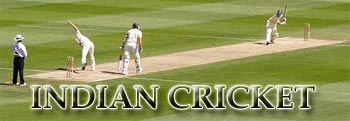26.12.2018 Author: C.NAMASIVAYAM
The third Test of the Border- Gavaskar Trophy between India and Australia begins in Melbourne on Boxing Day. The series is level at 1-1 with India winning the first Test at Adelaide by 31 runs and Australia the second Test at Perth by 146 runs. The third Test is crucial for India as any slip up at Melbourne would put an end to India’s aspiration to win a Test series in Australia for the first time in 70 years of touring this country.The Boxing Day Test, The Indian Team Management
Ahead of the Boxing Day Test, the Indian team management has put the best foot forward by dropping both the out-of-form openers Murali Vijay and K.L. Rahul. Mayank Agarwal will make his debut and open the batting with Hanuma Vihari. Ironically, K.L. Rahul too made his debut on the Boxing Day Test in 2014.Rohit Sharma is back in the middle-order. Ashwin has been ruled out and his place will be taken up by Jadeja. Hardik Pandya has not been considered due to lack of match practice. Now the team looks much stronger at least on paper.
The importance of the toss from an Indian
Having addressed the team composition factor resourcefully, there is yet another uncontrollable factor which India should encounter at Melbourne which is the outcome of the toss.In this article, let us evaluate the importance of the toss from an Indian perspective. From the Indian point of view, they would ideally wish to win the toss and bat first irrespective of the nature of the wicket. It doesn’t mean that India would win the match if they win the toss. It increases their chances of winning manifold if they get to bat first.
Being the touring team, the Indians are more dependent on the toss than the Aussies. Batting first would give them a chance to recover from any dreadful start taking into consideration the new opening pair for India. It happened at Adelaide where India recovered from 41 for 4 to get into a winning position.
Compared to India, the hosts Australia are better placed to nullify the toss advantage as they showed at Adelaide where they came back from a hopeless situation to lose the Test match by a narrow margin of 31 runs. But if they happen to bat first as in Perth, there are more chances of them batting India out of the game if they manage to get on top of the quality Indian bowling attack.
India haven’t lost a single Test in Virat Kohli’s captaincy after winning the toss. In the 20 Test matches that he has won the toss, Kohli has won 17 matches and drawn 3. Kohli has also won more Test matches than any other Indian captain after winning the toss.
India’s recent overseas records suggest that India should first win the toss if they have any realistic chance of winning the match. In South Africa early in the year, India lost the toss in the first two Test matches and the match thereafter. In the first Test at Capetown, India failed to chase down a modest target of 207 and were bundled out for 135 in the second innings. However, they came back to win the Third Test after winning the toss and batting first.
In England, Kohli lost all the tosses and the result was 4-1 against India. The only time India managed to win was in the third Test at Nottingham where Joe Root was generous enough to invite India to bat first after winning the toss. Perhaps Root was more prejudiced by the conditions of the previous Test match at Lord’s. Lord’s was the only time India lost a Test match in recent times after being asked to bat first. In the first Test at Edgbaston, India failed to chase down a gettable target of 194.
Team India’s nexus between the end result and the outcome of the toss continued in the first two Test matches of the ongoing Gavaskar-Border Trophy in Australia.
Test match in SENA
The last time India won a Test match in SENA (South Africa, England, New Zealand and Australia) countries batting second was against New Zealand in the first Test at Hamilton in 2009. In the last 10 years, India haven’t won a single Test match in SENA countries batting second. This very statistics would underline the importance of India winning the toss in the ongoing series. However, it doesn’t imply that India have won every time that they batted first. It only improves the chances of India winning since India can come back into the match with their strong bowling attack on overseas conditions.In the last 10 years, India haven’t won a single Test match chasing over 200 runs in the fourth innings whether at home or overseas. This signifies the Indian bowlers’ invincibility at home and the batsmen’s inadequacy abroad.
By batting first, India could mask the weaknesses of the long tail. On the other hand, if Australia bat first, their tail wags much stronger contributing crucial runs. For India, the presence of Jadeja in the lower order for the third Test could somewhat change the equation. But for that to happen, Rishabh Pant should curtail his attacking instincts and should look to forge a meaningful partnership with Jadeja and the tail.
To sum up, having selected the best team under the circumstances, India would look forward to win the toss and bat first. But the outcome of the toss is not in anyone’s control. Perhaps, Kohli should change his calling this time around from head to tail for the transformation in fortune as the constant calling of heads diminishes the probability of success.



